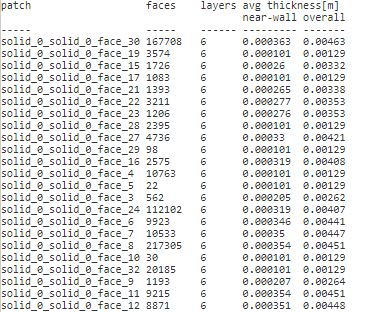I have not quite been able to figure out how the columns are figured out.
To get a feel for the overall % layering of a mesh, I use a weighted average by averaging the product of the faces times the Thickness %.
You might find it interesting to find your ‘Perfect layering’ table a ways up higher in the meshing log (sometimes it appears even before the last 1500 lines that you can see after the meshing is done, if that is the case you have to capture it by meshing again and watching the log in real time).
Here is the Perfect layering of a relatively layered mesh of mine:
And the Actual layering that is left at the end of the log:
If you really want to maintain the perfect layering (at a cost of a lower quality mesh as far as the solver would like to see) I would again suggest following this procedure which I have developed.
Dale
